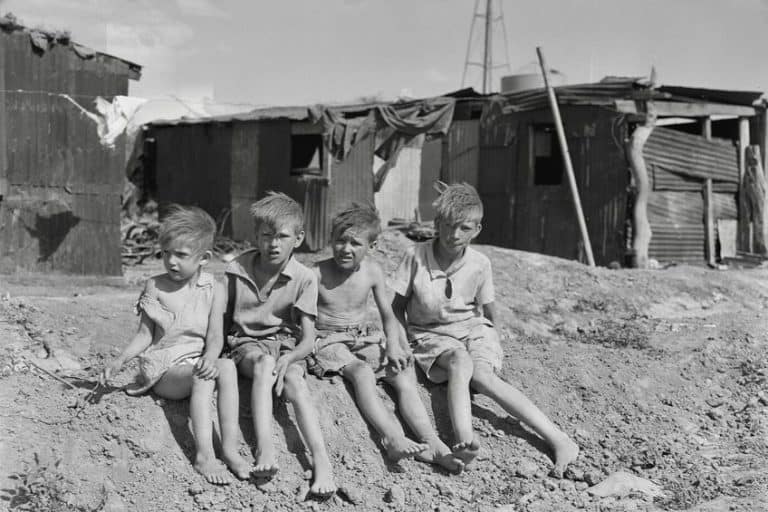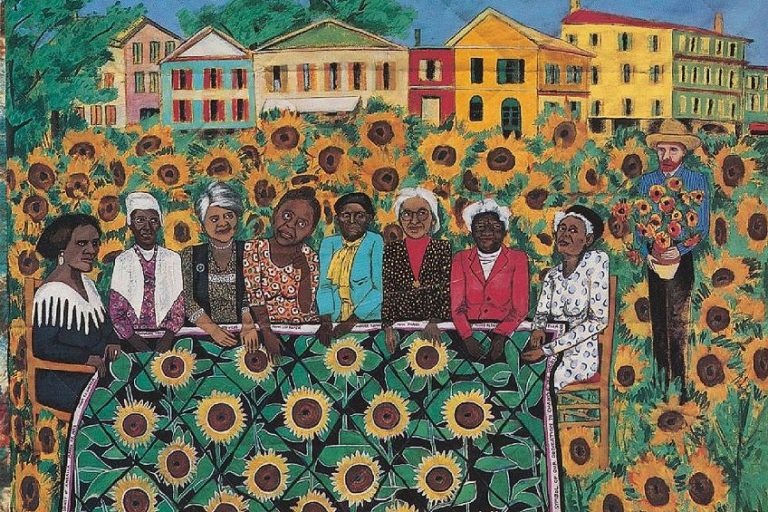Magdalena Abakanowicz – The Famous Polish Sculptor
Magdalena Abakanowicz, a prominent Polish sculptor and fiber artist, is celebrated for her groundbreaking contributions to contemporary art. Born on June 20, 1930, in Falenty, Poland, Abakanowicz rose to international acclaim for her monumental sculptures and installations that explore themes of human experience, collective memory, and the complexities of modern society. Her innovative use of materials, particularly textiles and fibers, revolutionized the perception of sculpture, blurring the boundaries between traditional craft and fine art. Through her powerful and evocative artworks, Abakanowicz left a lasting legacy, inspiring generations of artists and reshaping the landscape of sculpture in the 20th and 21st centuries.
Key Takeaways
- Magdalena Abakanowicz was an influential Polish sculptor known for her textile-based art and outdoor installations.
- Her artwork delved into the human experience and reflected the socio-political climate of post-war Poland.
- Abakanowicz’s legacy is perpetuated through her impactful exhibitions and lasting influence on the art world.
Early Life and Education
| Birth | June 20, 1930 |
| Death | April 20, 2017 |
| Place of Birth | Falenty, Poland |
| Notable Artworks |
|
Magdalena Abakanowicz was a pioneering Polish artist renowned for her distinctive approach to sculpture and her innovative use of textiles as a sculptural medium. Born on June 20, 1930, in Poland, Abakanowicz navigated a unique artistic path that led her to become one of the most influential artists emerging from the postwar period. Her work, often characterized by its textured forms and engagement with themes of the human condition, resonated with audiences worldwide and cemented her place in contemporary art history.

Abakanowicz’s contribution to art extended beyond individual pieces to include significant outdoor installations that transformed the public’s interaction with space and sculpture. With a focus on the human body and an exploration of societal and political themes, her artworks transcended the purely aesthetic to delve into deeper narratives about identity and history.
Through her decades-long career, Abakanowicz exhibited extensively in prestigious venues, from galleries in her native Warsaw to international institutions, leaving behind a legacy that continues to inspire and provoke contemplation.
Formative Years
Born on June 20, 1930, in Falenty, Poland, Magdalena Abakanowicz came from Polish nobility. Her father was a member of the Polonized Lipka Tatar lineage, while her mother descended from Polish aristocracy. Her upbringing in the Polish countryside was set against the backdrop of the Second World War, an event that shaped her childhood experiences.

Artistic Training
In pursuit of her artistic passion, Abakanowicz started her education in art in the town of Tczew before moving to the prestigious Academy of Fine Arts in Warsaw. She enrolled in 1950 and continued her studies there for five years, refining her skills in an environment still reeling from Poland’s experiences during wartime.
All this time, she was under the shadow of the Soviet Union.
Artistic Career
Magdalena Abakanowicz’s artistic career was marked by continual innovation in the realm of textiles and evolution into large-scale sculpture. As an influential educator, she also imparted her knowledge to future generations of artists.

Textile Innovations
Abakanowicz revolutionized the world of textile arts with her innovative works known as “Abakans”. These were large-scale, three-dimensional textile pieces that challenged traditional perceptions of tapestry. Created in 1960s, these tactile works displayed complex forms and involved a labor-intensive weaving process.
Her approach brought textiles into the realm of sculptural art, showcasing her as a pioneer in the field.
Sculptural Evolution
From textiles, Abakanowicz’s creative expression evolved, leading her to create imposing sculptures often comprised of multiple units or “crowds”, as seen in her famous series of headless figures referred to as “backs”. Drawing from themes of biology and embryology, these sculptures distilled human form and experience to a universal essence. Her sculptural progression reflected an interest in the human condition and a move away from traditional sculptural methods to a more conceptual practice.

Teaching and Influence
A dedicated educator, Abakanowicz shared her expertise as a professor at the University of Fine Arts in Poznań and at the Academy of Fine Arts in Warsaw. She influenced a new wave of artists with her knowledge of both traditional constructivism and modern sculptural techniques.
As a fiber artist and sculptor, her impact on the art world extended beyond her creations to her students and the broader artistic community in Poland and internationally.
Major Works and Exhibitions
Magdalena Abakanowicz’s artistic endeavors spanned across significant series, public installations, and international recognition through multiple exhibitions worldwide.

Significant Series
One of her most notable series is Abakans, large woven fibrous sculptures that show a departure from traditional tapestry and ventures into three-dimensional forms. The Abakans brought Abakanowicz acclaim, especially in the 1960s where her groundbreaking work was synonymous with material innovation.
It served as a statement against the rigidity of the socialist realism that dominated Poland at the time.
Public Installations
Abakanowicz excelled in creating outdoor installations, often monumental in scale and addressing the theme of the crowd or collective versus the individual. Her noteworthy public installation, Agora, consists of 106 cast iron figures situated in Chicago’s Grant Park. Another significant work is the sculpture titled Birds of Knowledge of Good and Evil in Milwaukee, a composition that reflects her intricate work with bronze. These installations, both evocative and existential, resonate with audiences globally.

International Recognition
Magdalena Abakanowicz achieved international recognition with numerous exhibitions held across Jerusalem, Seoul, Paris, Lausanne, and New York City. Her works, often made from materials such as iron, bronze, stone, resin, and burlap, were displayed in places like the Hiroshima City Museum of Contemporary Art.
This showcased her influence and relevance in the sphere of contemporary outdoor sculpture.
Legacy and Impact
Magdalena Abakanowicz’s enduring influence in the art world is intricately tied to her innovative artistic contributions and profound cultural influence. Her body of work stands as a testament to individuality and historical contemplation during the postwar era.

Artistic Contributions
Magdalena Abakanowicz was a pioneering Polish sculptor and fiber artist, whose work transcended the typical norms of her time. She was widely recognized for her unconventional approach to textiles as a sculptural medium, a deviation from the socialist realism that was promoted by the communist regime in Poland.
Her series of large-scale, headless figures known as “Abakans” brought her international acclaim, urging viewers to confront themes such as individuality and the dehumanizing effects of political systems.
Cultural Influence
Abakanowicz’s influence extended beyond the realm of sculpture and into the broader cultural spectrum of Poland and beyond. As one of the most influential Polish artists of the postwar era, she played a significant role during the political and cultural thaw of the 1950s and 1960s. Her experiences under the Nazi occupation of Poland deeply impacted her work, manifesting in her explorations of the human condition and the scars left by history. Her installations often prompted discourse on gender, history, and the human experience, challenging both the personal and collective memory.

Magdalena Abakanowicz’s impact on the world of art is undeniable, leaving an indelible mark with her innovative sculptures and installations. Her ability to transform ordinary materials into profound expressions of human existence and societal dynamics has solidified her legacy as a visionary artist. Abakanowicz’s work continues to resonate with audiences globally, provoking thought and sparking conversations about identity, memory, and the human condition. As we reflect on her contributions, it’s clear that her artistic vision will inspire generations to come, shaping the ongoing evolution of contemporary art.
Frequently Asked Questions
What Are the Most Prominent Themes in Magdalena Abakanowicz’s Artwork?
Magdalena Abakanowicz’s artwork is characterized by strong themes of existentialism, the complexity of human nature, and the tension between the individual and the collective. Her textile-based sculptural work often reflects on the impact of social and political issues on human beings.
How Did Magdalena Abakanowicz’s Background Influence Her Art?
Her background in Poland, marked by the experiences during World War II and the subsequent communist regime, deeply influenced her art. Abakanowicz’s personal history is reflected in her art’s recurring exploration of the human condition and the resilience of the human spirit in the face of adversity.
What Legacy Did Magdalena Abakanowicz Leave in the Art World Following Her Passing?
Abakanowicz left a significant legacy as an innovator who challenged traditional definitions of sculpture and art. Her use of fibrous materials revolutionized the realm of sculpture. Moreover, her impactful installations and the haunting presence of her figures in public spaces continue to resonate with audiences worldwide.
Isabella studied at the University of Cape Town in South Africa and graduated with a Bachelor of Arts majoring in English Literature & Language and Psychology. Throughout her undergraduate years, she took Art History as an additional subject and absolutely loved it. Building on from her art history knowledge that began in high school, art has always been a particular area of fascination for her. From learning about artworks previously unknown to her, or sharpening her existing understanding of specific works, the ability to continue learning within this interesting sphere excites her greatly.
Her focal points of interest in art history encompass profiling specific artists and art movements, as it is these areas where she is able to really dig deep into the rich narrative of the art world. Additionally, she particularly enjoys exploring the different artistic styles of the 20th century, as well as the important impact that female artists have had on the development of art history.
Learn more about Isabella Meyer and the Art in Context Team.
Cite this Article
Isabella, Meyer, “Magdalena Abakanowicz – The Famous Polish Sculptor.” Art in Context. March 19, 2024. URL: https://artincontext.org/magdalena-abakanowicz/
Meyer, I. (2024, 19 March). Magdalena Abakanowicz – The Famous Polish Sculptor. Art in Context. https://artincontext.org/magdalena-abakanowicz/
Meyer, Isabella. “Magdalena Abakanowicz – The Famous Polish Sculptor.” Art in Context, March 19, 2024. https://artincontext.org/magdalena-abakanowicz/.











